Passionflower, particularly the Passiflora 'White Wedding', offers a unique blend of elegance and symbolism for wedding decor, making it a distinguished choice for any nuptial celebration. With its striking, pure white blooms and vigorous vines, this tetraploid hybrid not only beautifies but also carries deep cultural meanings of love, faith, and commitment. Its appeal is further enriched by its versatility in bouquets, centerpieces, and thematic arrangements. Discover how this flower, with its rich heritage and aesthetic allure, can transform your wedding into an unforgettable experience. What makes the Passiflora 'White Wedding' stand out in wedding florals?
Flower Overview
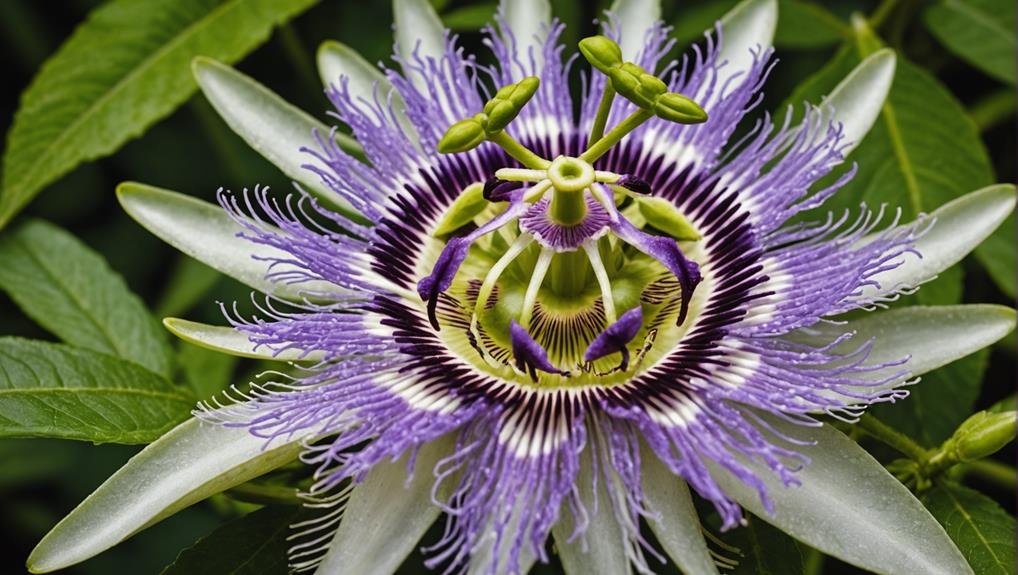
Passiflora 'White Wedding' is a tetraploid hybrid well-known for its large, white, and fragrant blooms, making it a striking addition to summer gardens. Developed by Roland Fischer in Hemer, Germany, this passion flower is characterized by its robust vines and enhanced vigor. These attributes make it particularly well-suited for enhancing garden landscapes, especially when trained to climb lattice work or fences. The hybrid's ability to bloom freely during the summer months is notably influenced by long days and strong sun exposure, ensuring a visually alluring display throughout the season.
Aside from its visual appeal, Passiflora 'White Wedding' is also valued for its light fragrance, which adds an extra layer of sensory delight to outdoor spaces. The combination of visual beauty and pleasant scent makes this hybrid an excellent choice for gardeners seeking to elevate the elegance and charm of their environments. Its adaptability to different garden settings further underscores its versatility and desirability.
Physical Description
The striking appearance of 'White Wedding' is defined by its large, pure white flowers that stand out against the lush, green foliage of its robust vines. These passion flowers, a tetraploid hybrid of P. caerulea Constance Elliott, have been meticulously bred by Roland Fischer in Hemer, Germany. Their expansive, showy blooms feature a light aroma that is particularly captivating during summer, under long days and strong sunlight.
The 'White Wedding' variety is characterized by its vigorous growth and heavier vines, making it an excellent choice for climbing lattice work or garden fences. This inherent vigor not only adds structural beauty to garden displays but also supports a low-maintenance gardening experience, thriving in warm climates with regular watering.
| Feature | Description |
|---|---|
| Flower Color | Pure white |
| Fragrance | Light, invigorating |
| Bloom Season | Summer, with long days and strong sun |
The lush foliage of these passion flowers creates a striking contrast with the pristine white blooms, enhancing their natural beauty. Ideal for attracting pollinators, the flowers of 'White Wedding' serve as a delightful addition to any summer garden display. With its robust climbing capability and minimal maintenance needs, this passionflower variety offers both aesthetic appeal and practical benefits for garden enthusiasts.
Available Colour Varieties
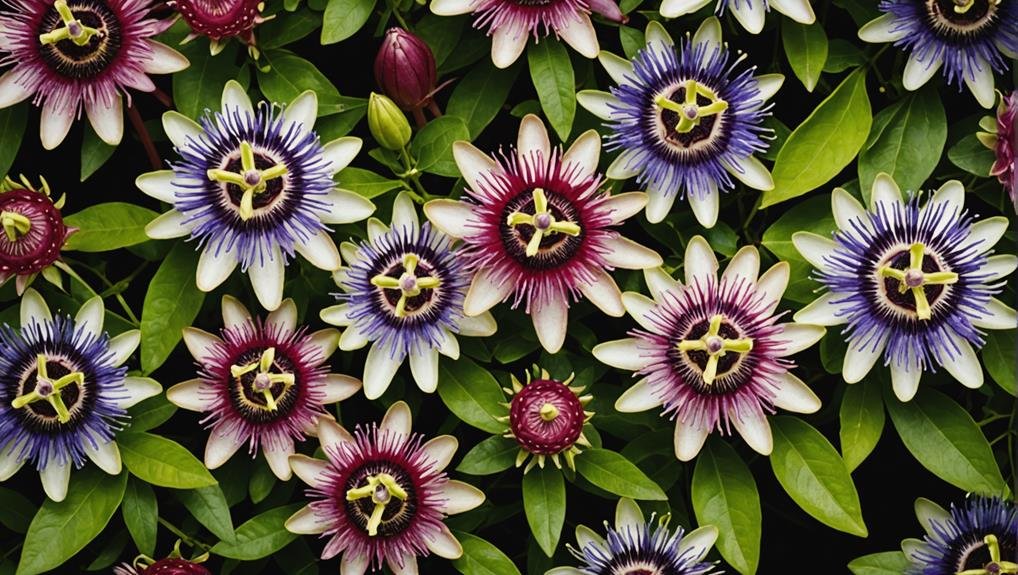
While 'White Wedding' captivates with its pristine white blooms, passionflowers also come in a diverse array of colors including purple, blue, pink, and red. This variety allows for a versatile range of applications in wedding decor, from bouquets to centerpieces and beyond. The vivid hues of passionflowers can complement various wedding themes and color schemes, adding a unique touch to floral arrangements.
Among the popular varieties, Passiflora caerulea 'Constance Elliott' stands out with its elegant white flowers, which can serve as a sophisticated alternative to the 'White Wedding'. In addition, the purple shades of Passiflora incarnata and the striking blue tones of other Passiflora species offer ample opportunities to create visually stunning displays. These vibrant colors symbolize love, faith, and commitment, making passionflowers a meaningful addition to any wedding celebration.
Moreover, the presence of pink and red varieties guarantees that passionflowers can cater to a wide range of aesthetic preferences. Whether opting for a traditional or modern look, the diverse color palette of passionflowers can enhance the overall ambiance of the wedding. Their inherent beauty and symbolic significance make them a popular choice for couples seeking to infuse their special day with elegance and meaning.
Latin Name and Taxonomy
Understanding the Latin name and taxonomy of passionflowers provides deeper insight into their unique characteristics and suitability for wedding decor. The passionflower commonly selected for weddings is known by its Latin name, Passiflora 'White Wedding'. This exquisite variety is a member of the Passifloraceae family, underscoring its place within a diverse and botanically rich group of plants.
Passiflora 'White Wedding' is a hybrid meticulously crafted by Roland Fischer of Hemer, Germany, highlighting the human ingenuity involved in its development. This specific variety is a tetraploid hybrid of Passiflora caerulea Constance Elliott, renowned for its large, dazzling white flowers. The plant's taxonomy reveals its inherent features: mid-green, lobed leaves, twining tendrils, and striking orange ovoid fruits that become edible upon ripening.
As a vigorous climber, Passiflora 'White Wedding' thrives in environments with long days and ample sunlight, blooming profusely in the summer months. The classification of this passionflower not only provides a framework for understanding its growth habits and aesthetic appeal but also underscores its practicality and visual impact in wedding arrangements.
Its robust nature and alluring blooms make Passiflora 'White Wedding' a fitting choice for creating memorable wedding decor.
Geographical Origins
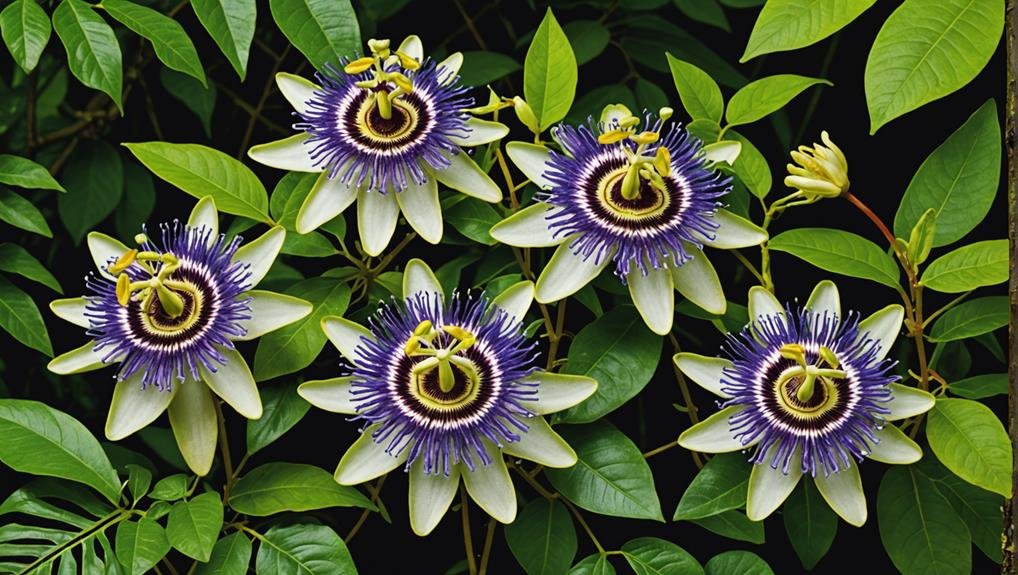
Passionflowers mainly originate from tropical and subtropical regions of the Americas, flourishing particularly in countries like Brazil, Argentina, Paraguay, and Mexico. These vibrant regions provide the warm climates and diverse ecosystems that are ideal for the growth of the Passiflora genus, which encompasses over 500 species. Among these species, Passiflora 'White' stands out for its striking, ethereal blooms that add a touch of elegance to any floral arrangement.
The geographical origins of passionflowers extend beyond their native habitats. Historically, their ornamental beauty and distinctive floral structure have led to their introduction and naturalization in other parts of the world, including Australia, Africa, and Asia. This global dispersion has not only enriched gardens worldwide but also allowed for the cultural and symbolic significance of passionflowers to be embraced across different regions.
The intricate and exotic appearance of passionflowers, including the Passiflora 'White', has made them popular choices in gardens and as symbols of passion and beauty. Their unique structure and vivid colors continue to captivate admirers, making them a cherished addition to wedding bouquets and floral arrangements.
Understanding their geographical origins enhances our appreciation of these remarkable flowers and their journey across the globe.
Season Availability
Passionflowers, with their intricate and enchanting blooms, are mainly available during the summer months, aligning perfectly with many peak wedding seasons. Their peak blooming period makes them an ideal choice for couples planning summer weddings, as these flowers add a unique and elegant touch to floral arrangements.
The availability of passionflowers can vary based on local climate conditions and the specific variety being used. For those seeking a romantic and whimsical look, passionflowers can seamlessly blend into wedding decor, enhancing the overall aesthetic with their exotic charm.
One of the appealing aspects of passionflowers is their versatility in color, including varieties that feature white blooms. White passionflowers, in particular, can complement a wide range of wedding color schemes, adding a touch of purity and sophistication. This makes them a popular choice for bridal bouquets, centerpieces, and other floral accents.
While summer is the prime season for passionflowers, it is important to consult with local florists to confirm availability. The specific growing conditions of the region and the type of passionflower desired may influence their presence in the market.
Growing Conditions
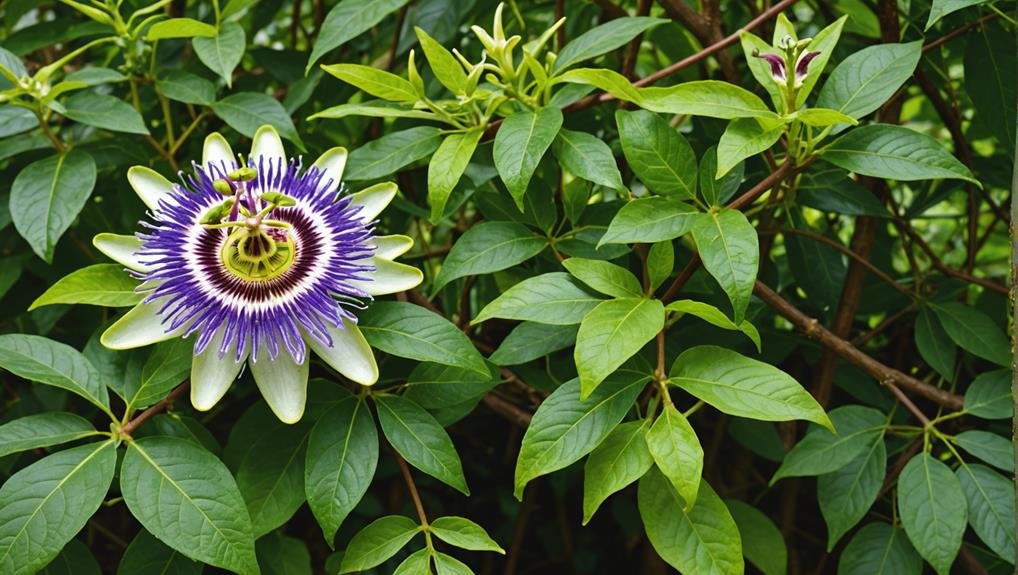
To cultivate passionflowers successfully for wedding arrangements, one must consider their specific growing conditions, including climate and soil requirements. Passionflowers thrive in hardiness zones 9-11, making them suitable for regions with mild winters and warm summers. They prefer full sun or partial sun exposure, which promotes robust growth and abundant flowering.
These climbers can grow up to 10-15 feet in height, making them ideal for trellises, walls, fences, or arbors—perfect for creating visually stunning backdrops at wedding venues. Passionflowers require well-drained soils to prevent root rot and other moisture-related issues. Deep but infrequent watering is recommended to encourage strong root development. Minimal fertilizer is needed; excessive fertilization can lead to too much foliage at the expense of flowers.
The attractive white flowers of Passiflora 'White Wedding' are not only visually appealing but also attract butterflies with their fragrance and nectar, adding a touch of natural beauty to any wedding setting. For best flower production, pinching the terminal buds can promote branching, leading to more blooms.
Cultural Significance
Renowned for their intricate beauty and profound symbolism, passionflowers hold significant cultural and religious meaning across various societies around the world.
In Christian iconography, the passionflower is imbued with deep religious symbolism, often representing the Passion of Christ. The flower's unique structure, featuring ten petals and sepals, is interpreted to symbolize the apostles, while the radial filaments are likened to the crown of thorns worn by Christ during the crucifixion. Additionally, the three stigma points are thought to represent the nails used in the crucifixion, further embedding the passionflower within a narrative of sacrifice and redemption.
Beyond its Christian connotations, the passionflower also holds cultural significance among indigenous peoples in the Americas. These communities have utilized the flower for medicinal purposes and spiritual rituals, seeing its beauty and complexity as a manifestation of nature's spiritual power.
The passionflower's multifaceted symbolism and historical usage are underscored by its visual complexity, which has fascinated both botanists and cultural historians alike, including noted scholar Roland Fischer. This rich tapestry of meanings makes the passionflower a poignant floral choice, resonating deeply with themes of love, faith, and the natural world.
Typical Use in Weddings
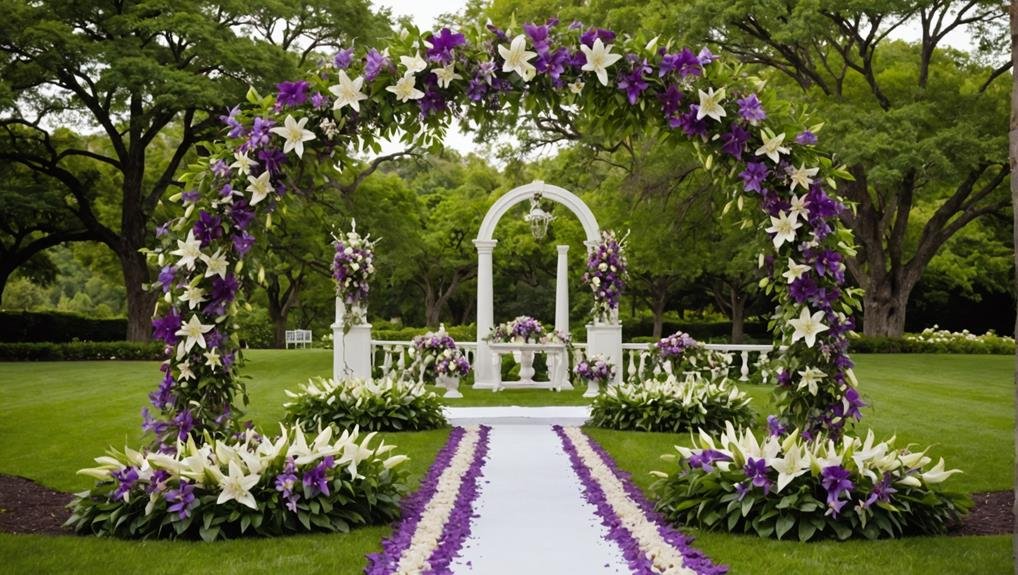
Incorporating passionflowers into wedding arrangements offers a unique blend of elegance and symbolism, enhancing both the aesthetic and emotional depth of the event. The delicate and intricate blooms of passionflowers, particularly the Constance Elliott variety, are prized for their stunning appearance and the symbolic meanings they carry.
The white blooms of the Passiflora 'White Wedding' variety, for example, symbolize purity and unity, making them a fitting choice for wedding celebrations.
Passionflowers are incredibly versatile and can be used in various elements of wedding decor:
- Bouquets and Boutonnieres: The unique structure of passionflowers makes them standout additions to bridal bouquets and boutonnieres, adding a touch of sophistication.
- Centerpieces and Garlands: These flowers can be woven into centerpieces, garlands, and arches, creating an ethereal and romantic atmosphere.
- Thematic Decor: Their intricate vines are perfect for adapting to various wedding themes, from rustic and bohemian to elegant and traditional.
Additionally, the butterfly-attracting nature of passionflowers adds a whimsical and enchanting element to wedding settings. By incorporating passionflowers like the Constance Elliott, couples can create a magical ambiance that leaves a lasting impression on their guests.
Alternative Flower Types
Exploring alternative flower types such as roses, dahlias, and peonies can provide a diverse array of options for creating stunning wedding arrangements. Each of these flowers brings its own unique charm and can dramatically enhance the aesthetic of your wedding decor. Roses, known for their classic beauty and wide range of colors, are an ever-popular choice.
Dahlias, with their intricate petal structures, add a touch of sophistication, while peonies offer lush, voluminous blooms perfect for romantic settings.
For those seeking something different, consider incorporating orchids, which exude elegance and exotic flair. Sunflowers can introduce a cheerful and vibrant atmosphere, while lilies and hydrangeas offer timeless beauty. Ranunculus, with their delicate layers, can substitute passionflowers with grace.
Carnations and tulips provide a vast palette of colors, making them versatile for various themes. Anemones and gardenias add both texture and fragrance to the arrangements. Unique blooms like protea and succulents, or striking choices like bird of paradise and calla lilies, can make a distinctive statement.
Roland Fischer suggests experimenting with wildflowers, eucalyptus, lavender, or baby's breath to achieve a rustic or bohemian aesthetic, perfect for an outdoor or countryside wedding.
